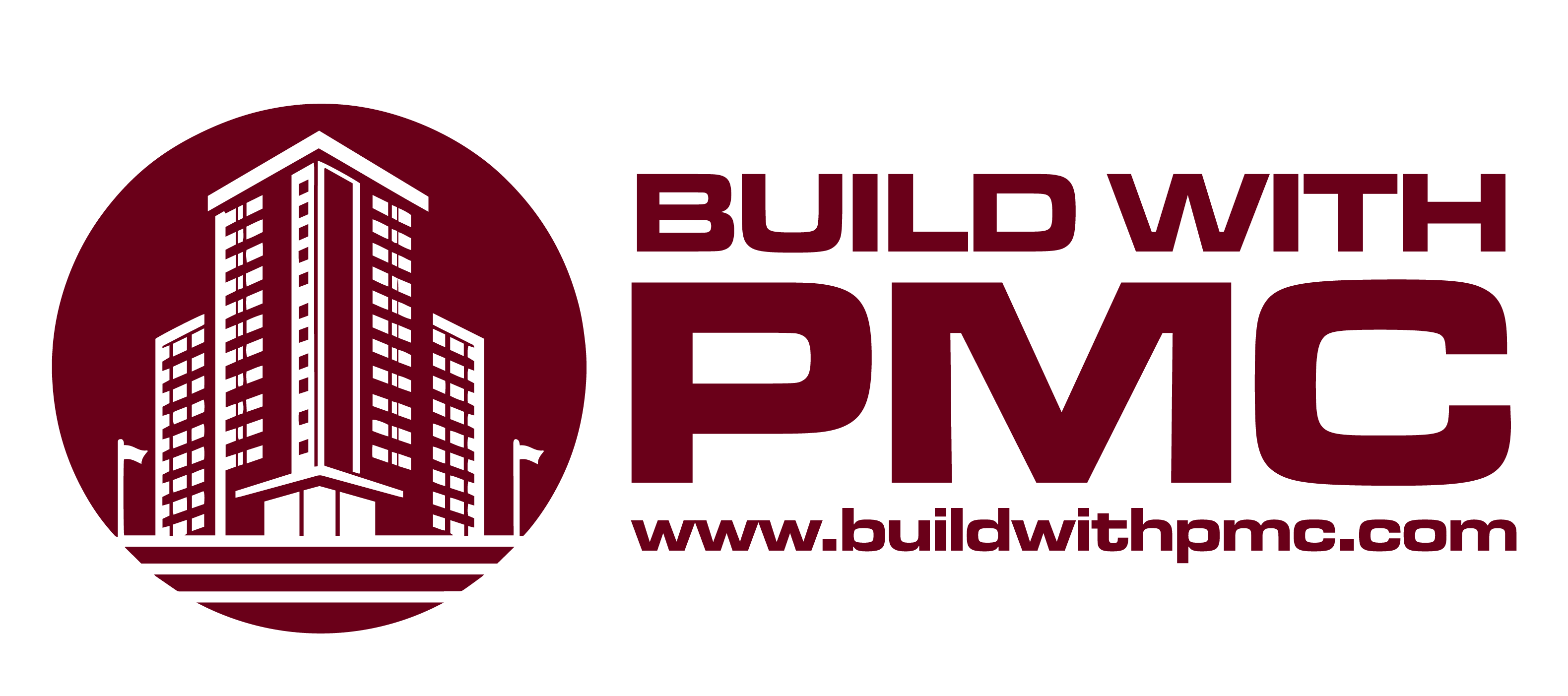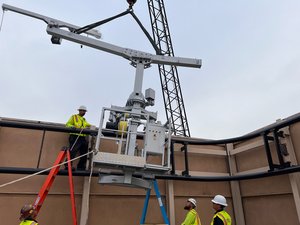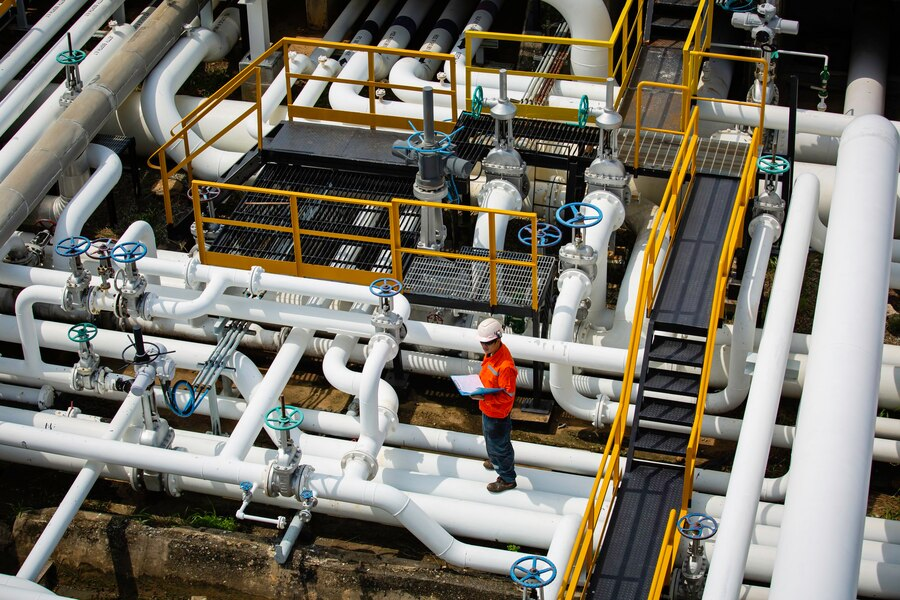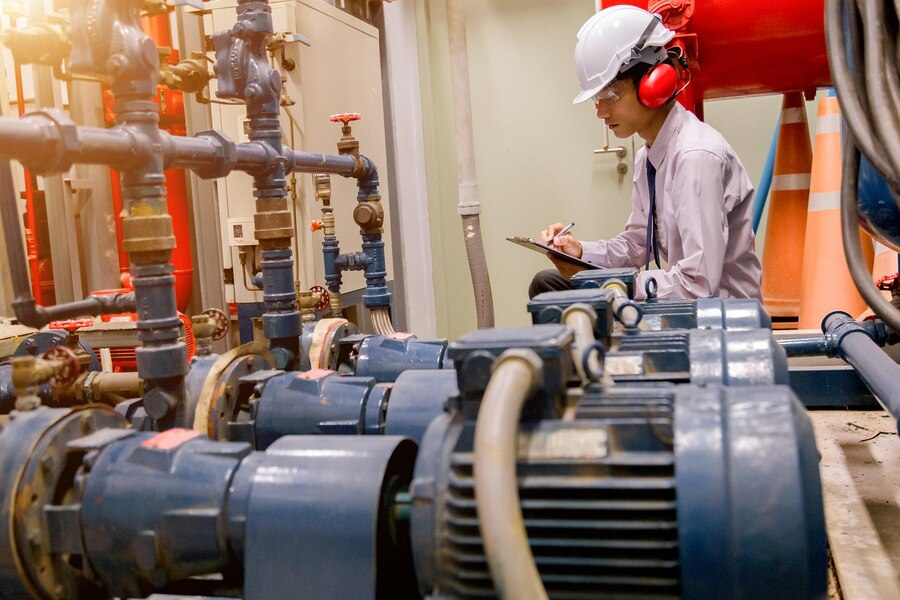When it comes to working on elevated projects such as construction, maintenance, or painting, having the right equipment is crucial for efficiency, safety, and cost-effectiveness. One popular option for accessing elevated areas is swing stage rental.
This versatile suspended platform system provides a practical solution for a wide range of projects, offering benefits that make it a preferred choice for many industries. In this blog post, we will explore the advantages and considerations of swing stage rental to help you determine if it’s the right choice for your elevated projects.
Understanding Swing Stage Systems
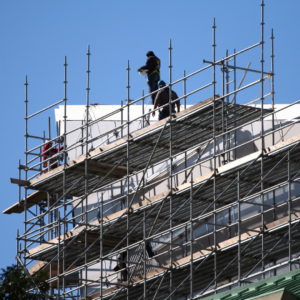
Swing stage systems, also known as suspended scaffolding or suspended platforms, consist of a platform suspended from ropes or cables that are attached to an overhead support structure.
These platforms can be raised or lowered to the desired height, allowing workers to access difficult-to-reach areas on the exterior of buildings, bridges, or other structures. Swing stages are commonly used in construction, painting, window cleaning, and maintenance tasks where traditional scaffolding or ladders may not be practical.
Advantages of Swing Stage Rental
- Versatility: One of the primary advantages of swing stage rental is its versatility. These systems can be customized to fit the specific requirements of each project, making them suitable for various applications. Whether you need to reach tall buildings, work on complex structures, or navigate around obstacles, swing stages can be configured to meet your project’s unique demands.
- Time Efficiency: Time is often a critical factor in construction and maintenance projects. Swing stage systems enable workers to access multiple areas without the need for constant dismantling and reassembly. This efficiency can significantly reduce project timelines, resulting in cost savings and faster project completion.
- Increased Safety: Safety is paramount when working at heights. Swing stage systems come equipped with safety features such as guardrails, harness anchor points, and emergency descent systems. These safety measures provide a secure working environment, reducing the risk of accidents and injuries. Additionally, workers can easily move horizontally along the structure, eliminating the need for constant climbing up and down.
- Accessibility: Swing stages allow for easy access to difficult-to-reach areas, such as building facades, bridges, and industrial structures. This accessibility is particularly beneficial for projects that involve intricate details or require precise workmanship. The ability to position workers precisely where they are needed contributes to the overall quality of the project.
Considerations Before Choosing Swing Stage Rental
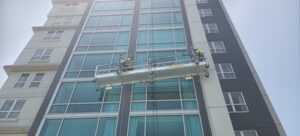
- Project Scope and Requirements: Before opting for swing stage rental, it’s essential to assess the scope and requirements of your project. Consider the height, size, and complexity of the structure you will be working on. Evaluate whether swing stages are the most suitable solution for the specific challenges posed by your project.
- Regulatory Compliance: Ensure that your chosen swing stage rental provider adheres to all relevant safety and regulatory standards. The equipment should meet industry specifications, and the provider should be able to provide documentation and certifications for their swing stage systems. Compliance with safety regulations is non-negotiable when working at heights.
- Training and Certification: Proper training and certification are crucial for the safe operation of swing stage systems. Before utilizing these platforms, ensure that your workers are adequately trained in the use of swing stages, including emergency procedures. Certification programs, often provided by the rental company, should be completed by all individuals operating or working on the swing stage.
- Site Assessment: Conduct a thorough site assessment to identify potential challenges and hazards. Consider factors such as wind conditions, proximity to power lines, and the presence of obstacles. This assessment will help determine if swing stage rental is a viable and safe option for your project.
- Cost Analysis: While swing stage rental offers numerous benefits, it’s essential to conduct a cost analysis to determine its economic feasibility for your project. Consider factors such as rental fees, transportation costs, and potential productivity gains. Compare these costs with alternative access solutions to make an informed decision.
Common Misconceptions about Swing Stage Rental
Complexity of Operation
Some may perceive swing stage systems as challenging to operate. However, with proper training, operators can quickly learn to use the equipment effectively. Rental providers often offer training sessions to ensure safe and efficient usage.
High Cost of Rental
While the upfront cost of swing stage rental may seem high, it’s crucial to consider the overall cost-effectiveness. When factoring in reduced setup time, increased efficiency, and decreased maintenance costs, the overall expense may be lower than traditional alternatives.
Limited Application
Another misconception is that swing stages have limited applications. In reality, they are highly versatile and can be adapted to various projects, including painting, window cleaning, repairs, and construction work on buildings of different heights and designs.
Is Swing Stage Rental Right for You?
Ultimately, the decision to opt for swing stage rental depends on the specific requirements of your elevated project. If your project involves extensive work at heights, requires versatility, and demands time efficiency, swing stage rental can be a highly suitable choice. The benefits of cost-effectiveness, safety, and adaptability make swing stages a valuable asset for a wide range of industries.
However, it’s crucial to conduct a thorough assessment of your project’s needs and constraints. Consider factors such as project scope, regulatory compliance, training requirements, cost analysis, and weather conditions. Additionally, consult with professionals in the field, including swing stage rental companies, to gather insights and ensure that you make an informed decision.
Conclusion
Swing stage rental stands out as an excellent choice for elevated projects, providing unparalleled versatility, time efficiency, enhanced safety features, and accessibility to challenging areas. However, before opting for swing stages, it’s crucial to conduct a thorough evaluation of project-specific requirements, ensure regulatory compliance, prioritize training, perform a comprehensive site assessment, and conduct a cost analysis.
When utilized correctly and integrated into a well-planned project strategy, swing stages can markedly boost efficiency and safety, leading to successful and timely project completion.
As with any specialized equipment, understanding the nuances and adhering to safety protocols ensures that swing stage rental becomes a valuable asset in the toolkit of construction and maintenance professionals.
